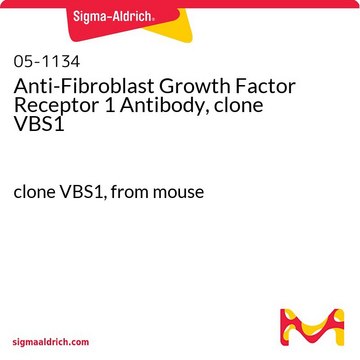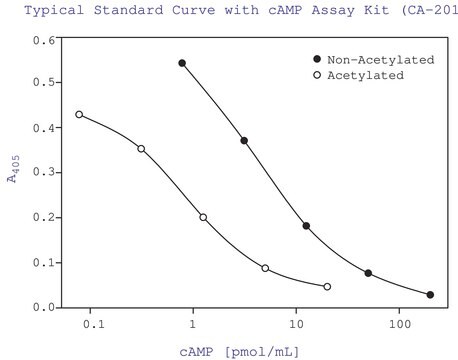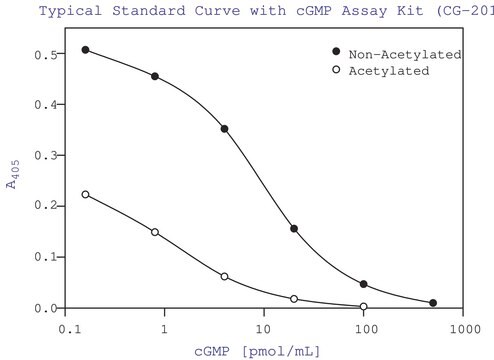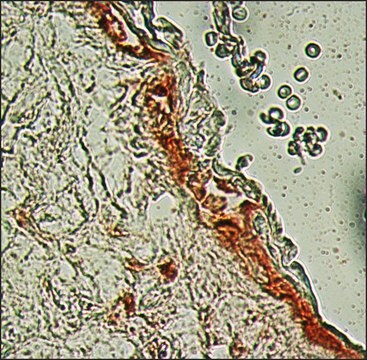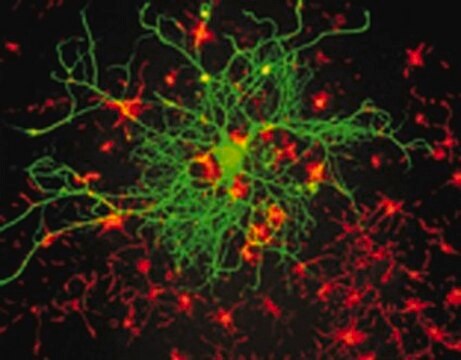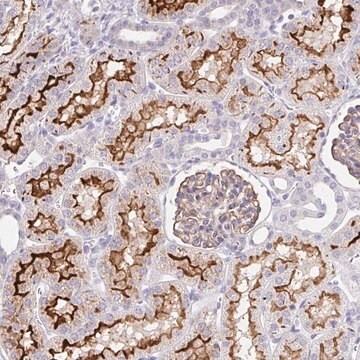F5421
Anti-Fibroblast Growth Factor Receptor-1 antibody produced in rabbit
~1 mg/mL, affinity isolated antibody, buffered aqueous solution
Sinónimos:
Anti-FGFR-1
About This Item
Productos recomendados
origen biológico
rabbit
Nivel de calidad
conjugado
unconjugated
forma del anticuerpo
affinity isolated antibody
tipo de anticuerpo
primary antibodies
clon
polyclonal
Formulario
buffered aqueous solution
mol peso
antigen 110-120 kDa
reactividad de especies
human
envase
antibody small pack of 25 μL
concentración
~1 mg/mL
técnicas
immunohistochemistry (formalin-fixed, paraffin-embedded sections): 1:200 using trypsin-digested human and animal tissue sections
immunoprecipitation (IP): suitable
western blot: 1:400 using an extract of FGFR-1 transfected cells
Nº de acceso UniProt
Condiciones de envío
dry ice
temp. de almacenamiento
−20°C
modificación del objetivo postraduccional
unmodified
Información sobre el gen
human ... FGFR1(2260)
Descripción general
Especificidad
Staining of the product is specifically inhibited with the FGFR-1 immunizing peptide. No reaction with human FGFR-2 and FGFR-3 is detected.
Inmunógeno
Aplicación
- immunoprecipitation
- immunofluorocytochemistry
- immunohistochemistry
- immunoblotting
Forma física
Cláusula de descargo de responsabilidad
¿No encuentra el producto adecuado?
Pruebe nuestro Herramienta de selección de productos.
Código de clase de almacenamiento
10 - Combustible liquids
Clase de riesgo para el agua (WGK)
WGK 2
Punto de inflamabilidad (°F)
Not applicable
Punto de inflamabilidad (°C)
Not applicable
Elija entre una de las versiones más recientes:
¿Ya tiene este producto?
Encuentre la documentación para los productos que ha comprado recientemente en la Biblioteca de documentos.
Nuestro equipo de científicos tiene experiencia en todas las áreas de investigación: Ciencias de la vida, Ciencia de los materiales, Síntesis química, Cromatografía, Analítica y muchas otras.
Póngase en contacto con el Servicio técnico